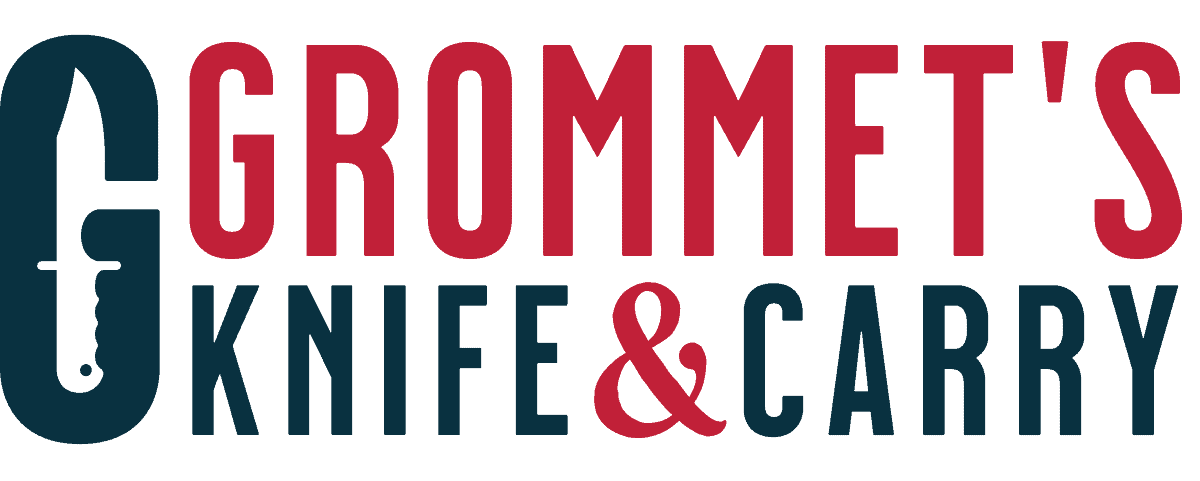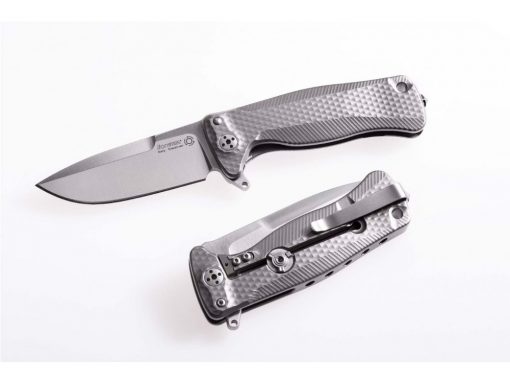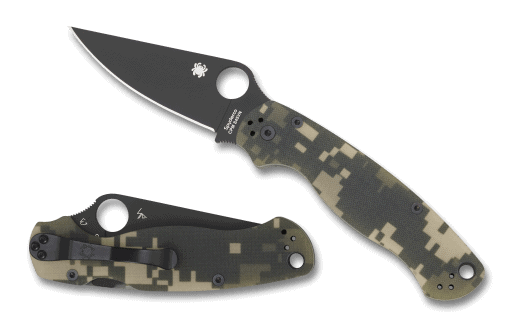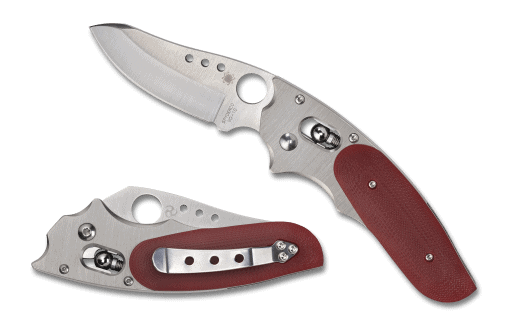Knives
Different Knife Lock Types
If you are looking at purchasing a folding knife, especially as a new buyer or collector, you can easily be overwhelmed by all of the options available. You will quickly notice that there are hundreds of features and styles to choose from. Should you get an EDC knife or a fixed blade knife? Assisted opening or manual? Flipper or thumb stud or thumbhole? What about the brand? Some knives, such as a butterfly knife, don’t have any locking mechanism at all. And all of that is often before you even get to one of the most important decisions: lock type.
Each pocket knife has its strengths and weaknesses depending on what you’re going to use it for. Types of locks are one of the most important things to consider before making your choice.
Why is the locking system so essential? Because at its most basic level, it prevents your pocket knife from closing on your hand during use. Not having a blade lock could lead to injury. Prevention is better than a cure! So, let’s take a look at some common locking mechanisms on the market today.
The Lock Mechanism of a folding knife
There are many knife lock types and different knife lock technology out there. They’re available in a variety of materials too. You’ve access to an incredible variety of locking mechanisms, almost too many. Most manufacturers stick to just one or two lock types across their production line, so if you find a brand you like at our knife store, the decision might be out of your hands.
Depending on the lock knife model or the manufacturer, you’ll find the one that best suits you. Which knife lock type is the one for you? Read on and see which one meets your needs.
The Lockback
The Lockback is a derivative of the non-locking slip joint. You can also find this popular knife lock under these names:
- Back lock
- Spine lock
- Mid lock
The locking rod rests on the middle of the blade scales. A curved spring is anchored further into the handle. Its role is to exert upward pressure behind the pivot point. This allows the front part of the locking rod to fold down.
When the blade is in a closed position, the locking bar is on a ramp at the bottom of the tang. In contrast, when it’s open, the front of the blade moves to the top of the blade’s tang. This looks like a square cutout that matches the design of the blade. The tang cutout is also fogged to match the curve of the lock bar shape.
To release the blade, lift the locking bar out of the notch. The spring bar mechanism keeps the lock closed until you press the bar. The spring tension allows the knife to open.
The Liner Lock
Liner lock knives are one of the most popular lock types. It’s also the most common type of folding knife lock among folding knife enthusiasts. Especially on the latest models. It might be the most ubiquitous lock type. Many consider it one of the most traditional pocket knives.
You may find more exciting, ingenious, and sophisticated locking systems. But when used well, a locking liner is particularly effective. The biggest advantage of this type of device is its ease of use and assembly. Its cost is also very attractive.
In the standard design, one of the blade liners engages the back of the blade tang when the blade opens. It’s cut and bent to mimic a spring effect. If you’re looking for a newer model of this same locking system, check out Michael Walker. He’s made two important improvements to the standard model:
- To align the blade when opened, he added a locking pin anchored in the toggle.
- For quick opening and added security, he added a detent ball on the liner lock to keep the blade closed.
The Frame Lock
The frame lock knife is the 2nd most popular option, after the liner lock. This locking mechanism is also known as R.I.L. or Reeve Integral Lock. It was first used on the Sebenza knife back in 1990.
This product is still manufactured today after a series of modifications and upgrades. It now offers a large engagement area and increased mechanical strength. This keeps the blade open.
The operation is comparable to that of a liner lock. Yet, it’s a more direct and durable lock and considered a reliable lock too. The frame is thicker and takes up the entire handle. Along the axis of the spine, rests a raised cutout. This feature creates an inward pressure when opening.
The vast majority of frame locks have a ball stop. This element engages in a hole at the base of the blade to keep it closed. Its role is to ensure a quick opening.
The locking pin mounted above and in front of the pivot eliminates wear and tear on the locking bar. This pivot pin allows locating the final position of the blade when it’s open.
Various investors introduced many improvements in recent years, so it handles more smoothly. They also enhance the action and security of the frame lock. Among them are:
- Overtravel stop
- Subframe lock
- Steel lock bar insert
The Compression Lock
The compression lock knife is a reverse, optimized liner lock. The use of these intuitive systems is often associated with Spyderco knives as you can find it on several of their models (Paramilitary 2, Para 3, Shaman, and more). Yet their scope is ever growing.
This locking mechanism uses a split liner. This sheath deploys automatically when the blade opens. It’s located along the back of the blade and opens between the blade tang and the locking pin. This lock type feature is stronger and easier to operate than a regular lock.
A compression lock stack also offers a higher safety factor than a liner lock. This is because your fingers aren’t in the path of the blade knife when closing. You can also swing it open when you push the lock for one-handed operation.
The Button Lock
The button lock is also called a plunge lock or push-button lock. You can often find these on an automatic knife. Yet, many people use manual knives such as the Protech Cambria. They’re both sturdy and long-lasting.
To use the push-button lock, hold down the button to release the lock. The spring tension then takes over. Locking in the open and closed position is now provided by an internal piston system. An opening mechanism such as a clamp or button is now required to deploy the manual button knives.
The Axis Lock
The Axis lock is a fun and exciting piece of engineering. It has many technical and functional advantages. Created by Bill McHenry and James Williams, this type of lock appeared on the market in 1998 on the Benchmade 710 model. Since then, Benchmade has released hundreds of new models that use the AXIS lock.
Its operation isn’t very complicated. A steel or stainless steel bar moves through slots cut in the handles and fittings. It passes through both the fittings and the handles at the same time. Two omega springs are responsible for applying uniform tension to both ends of the bar.
The blade has a notch cut into the back of the tang. When it opens, the springs force the bar over the notch. A locking pin is also used to hold the blade in place to increase safety and accuracy.
There’s a slight variation of the pin lock. All share the same philosophy but use different style components. These alternatives all work with a spring pressure that pushes a solid object on top of the blade tang. This keeps the knife blade in place.
The Ring Lock
The ring lock locking system is both unique and intuitive. Some producers decided not to make this type of lock at all. Opinel and Cold Steel are manufacturers still selling this type of locking system.
The operation of the ring lock is simple and handles well. A ring collar around the handle of the blade turns freely, and it locks in the extended or folded position. Again, this method distinguishes itself by its ease of operation. Yet, there are drawbacks to disassembly.
The Lever Lock
The lever lock system operates by means of a rod or stop pin located in or near the pivot bolster. You can insert this into a hole drilled in the base of the blade.
By inserting the stop pin into the hole in the blade, it’s possible to lock the blade in the open or closed position. This type of lock is most often used on automatic knives and offers a secure lock. It’s also the one that operates the most traditional pocket knives.
There is a somewhat different version of the lever lock system. This is a locking mechanism in which the blade comes with a rod on its back near the pivot. The top of the back spring is round and has a hole corresponding to the stop pin. When the blade opens, the pin strikes the hole in the rear spring. A firm lock then occurs immediately.
The Tri-Ad Lock
The Tri-Ad locking system is the fruit of an effort to perfect the Lockback design. It eliminates the play between the Lockback bar and the blade tang caused by wear. This is a common problem with Lockbacks.
This type of Lockback system comes with locking pins anchored in the knife handle. These pins are near the blade tang and the lock bar. The shock of the lock is no longer borne by the lock bar, which reduces the risk of wear. The lock only requires downward pressure. No more unnecessary tension on the locking bar! The Tri Ad lock is well known for its strength, but also for the famous popping sound when opening.
The Power Lock
The Power Lock is yet another variation of the Lockback. It was intended to enhance the locking force used on the Tatanka model with its huge 5″ blade. The PowerLock™–a deceptively simple yet incredibly strong lock that at first glance looks like an ordinary back lock. Take a closer look, however, and you’ll see a secondary cam component that is the secret to the lock’s strength. When the blade is opened, the tang contacts a sturdy stop pin in the handle to stop its rotation.
At the same time, the spring-powered lever in the back of the handle rotates the cam around its pivot, causing a finger at the bottom of the cam to wedge against a concave surface on the top of the tang. This wedging action creates an incredibly secure lock-up, yet allows the lock to be released smoothly and easily.This locking blade system uses a typical lockback bar located halfway down the shaft. It cooperates with a counter-rotating cam. The latter then engages with the blade’s tang.
The arrangement of these elements is vital. It makes it easier to cancel the bending of the locking bar. Without one of these elements, this bar would be too long and difficult to handle.
For more information about knife lock types, please contact Grommet’s Cutlery.
 PAY IN FOUR INTEREST-FREE PAYMENTS WITH SEZZLE
PAY IN FOUR INTEREST-FREE PAYMENTS WITH SEZZLE






